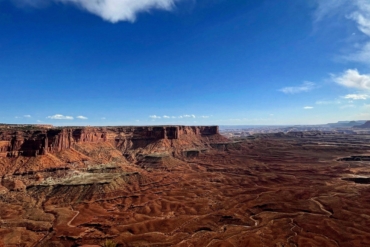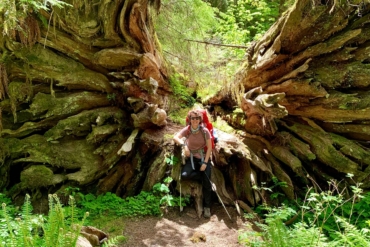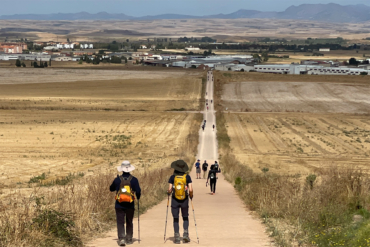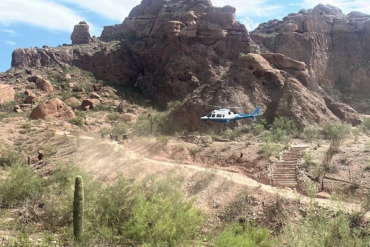Covering 4,000 miles through the wilds of Alaska revealed a few truths for Caroline Van Hemert. She shares these lessons that others can apply to wilderness epics of their own.
I’m an Alaskan adventurer, biologist, and writer with a penchant for pushing limits. Between March and September of 2012, I traveled with my husband, Pat Farrell, by rowboat, ski, foot, packraft, and canoe from the Pacific Northwest to the Alaskan Arctic.

This off-road, off-trail expedition taught me much about myself, my relationships, and my ability to push harder and farther than I thought possible. Along the way, we faced a predatory bear, swam across a swift and frigid river, and flipped a raft in the Arctic Ocean. Dangers and near-misses achieved balance with incredible rewards — migrating birds silhouetted against the moon, the steamy breath of caribou, and the bond that comes from sharing such experiences.
Any good adventure leaves us a bit wiser, humbler, and more inspired. The 6 months I spent in the northern wilderness were no exception. Here, I’ve shared lessons learned — both practical and philosophical — from this 4,000-mile journey.
Caroline Van Hemert’s recent book, “The Sun Is a Compass: A 4,000-mile Journey into the Alaska Wilds,” is available now.
Lessons From the Wilderness
Endurance is a state of mind.
The sheer length of this trip shifted my perspective toward movement: It’s a way of being rather than something that must be constantly tallied or measured. Our traverse of the Brooks Range brought 3 weeks of rain and some of the most physically demanding terrain we would encounter.
One night, as we sat shivering in the tent, I called my dad on the satellite phone for a weather update. “Things will look up soon. They always do,” he told me. Despite the fact that the rain didn’t stop and winter arrived early in the Arctic, he was right. A break came when we needed it most.
I return to this idea whenever I’m struggling, whether pounding out a trail marathon or climbing a snowy peak. Trust that things will get easier ahead and try to be patient in the meantime.
People are kind.
No matter how remote the location or how modest the setting, people we met along the way invited us into their homes, welcomed us at their dinner tables, and made us feel like a part of their families. Among our highlights are the gift of a brand new canoe from strangers, the delivery of hot coffee at a stormy beachside camp, and the story of a boy who’d nearly lost his life on a spring trip in the Arctic but instead found his voice. Remote wilderness journeys can be made so much richer by our experiences with other humans, even if such interactions are infrequent or unexpected.
Vacuum-seal your peanut butter.
Peanut butter makes everything taste better, especially when calories are at a premium. Vacuum-sealing it allows for easy delivery, a longer shelf life (we had to mail resupply packages to ourselves months in advance), and a ready-made energy burst any time of the day. It also packs small, is nearly indestructible in the bottom of a pack, and can be a great emergency food supply in a pinch. A home vacuum-sealing setup works fine — just make sure you mix well first. Cut a corner of the packet, squeeze, and enjoy!
Something always hurts.
If I stopped every time my knee ached or a blister rubbed my pinky toe raw, I would never have made it to the Arctic. Accepting a basic level of discomfort is essential for embracing long-distance hiking and other forms of backcountry travel. There’s an important caveat here, of course: Wait too long to tend to a nagging injury, and it can stop progress or end a trip prematurely. Just don’t expect to feel good all the time — none of us do!
Speed up and smell the roses.
There’s something to be said for moving slowly and looking around, but moving quickly also brings its own, often surprising rewards. To reach the Arctic before winter, we needed to average more than 20 miles per day. This allowed us to see the landscape at a very grand scale like many animals do. And it pushed us to travel at odd times of the day or night to cover such distances.
It was during these “twilight” hours that we often saw, heard, and experienced the most, from birds streaming overhead in the dark to bears sniffing along the tideline at dawn. These were also the times when we learned much about ourselves as we traveled far outside our usual comfort zones into a mental state that wavered between exhaustion and euphoria.
Small pleasures matter.
Skip the coffee? Not me! Although ultralight travel necessitates scaling back on luxuries, we can usually afford at least one thing that makes us feel happy, warm, or indulgent. Before leaving, Pat tried to convince me that we should save time and fuel by omitting our morning routine of hot drinks, but I refused, and I’m glad I did. Looking forward to my cup of joe (no matter how weak or lukewarm) got me out of bed each day.
Don’t forget the Leukotape.
Blisters are one of those ubiquitous problems that can quickly turn from annoying to debilitating. There are few easy solutions to ease our pain or avert a larger problem in the backcountry, but Leukotape is one of them. We didn’t know about this stuff before leaving, but I wish we had. It’s like duct tape, blister cushions, and liner socks all rolled into an affordable and simple package. And the stuff really sticks! If you feel a hotspot, grab the Leukotape, available online or in medical supply stores.
Preparation is important, but so is commitment.
I wouldn’t recommend launching north to Alaska in a rowboat that has never touched the water and without having ever operated a boat like this before. (Yes … guilty as charged!) But there’s a balance to be struck between preparation and accepting the unknown of a new adventure. It’s nearly impossible to feel fully prepared for a large expedition, and waiting for this moment to happen can mean that a trip is delayed forever.
We’ve learned to use a triage approach to identify the critical items that must be addressed before leaving, and accept that there are some details that will have to be dealt with along the way. At some point, it’s necessary to take a leap of faith and just go! Chances are you won’t regret it.
 Caroline Van Hemert is an adventurer, wildlife biologist, writer, and mom. Her recent book, “The Sun Is a Compass: A 4,000-mile Journey into the Alaska Wilds,” is available at your local bookseller or online. For more about Caroline and the book, see www.carolinevanhemert.com or find her on Instagram @sunisacompass or Facebook @carolinevanhemertauthor.
Caroline Van Hemert is an adventurer, wildlife biologist, writer, and mom. Her recent book, “The Sun Is a Compass: A 4,000-mile Journey into the Alaska Wilds,” is available at your local bookseller or online. For more about Caroline and the book, see www.carolinevanhemert.com or find her on Instagram @sunisacompass or Facebook @carolinevanhemertauthor.










